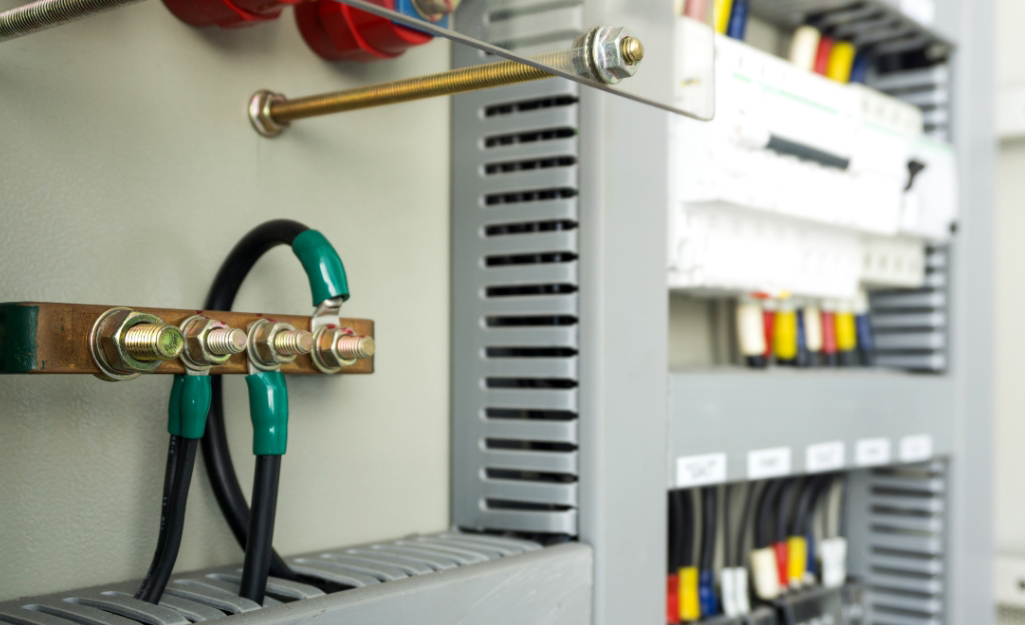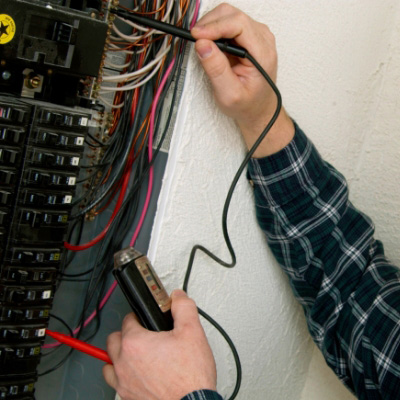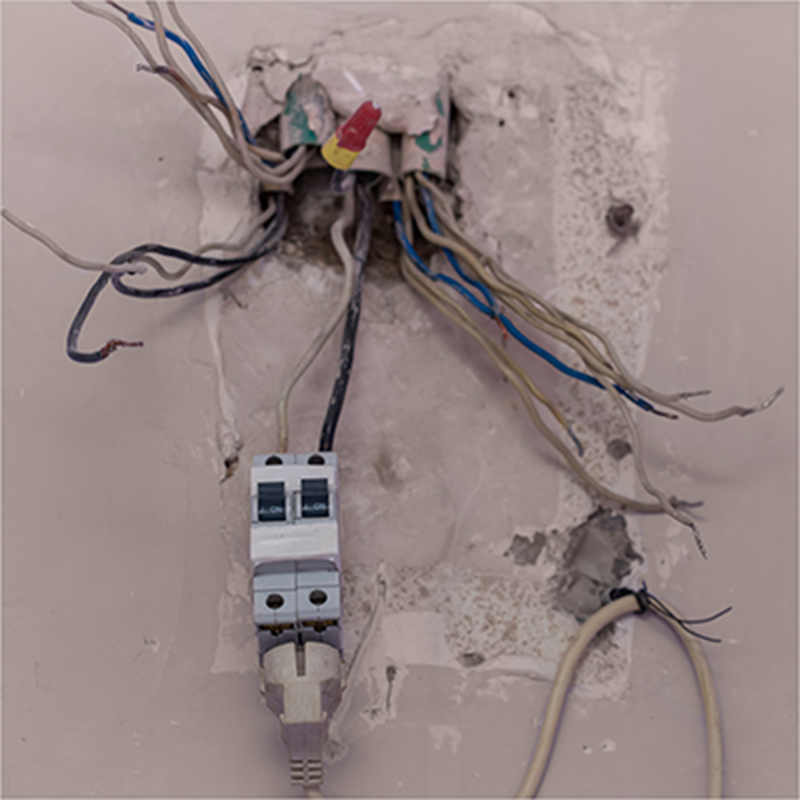How & Why to Ground Wiring

Last updated August 12, 2024
Proper electrical grounding is one of the most important parts of any safe electrical system. Installed correctly, grounding wire can prevent electrical shocks or fires at homes or in offices.
This guide reviews the basics of electrical grounding, how to safely ground wiring and how to check if wire is grounded.
Difficulty:
Advanced
Duration:
2-4 hours
Table of Contents
Why Does Wiring Need to be Grounded?
How to Ground Wiring
How to Test for Electrical Grounding
More Tools. More Products. More Perks.
Why Does Wiring Need to be Grounded?

Install grounding wire to provide a current with alternate paths to avoid electrical shocks in case of power surges. Run ground wires parallel to hot and neutral wires in a branch circuit. Connect electrical service boxes to grounding rods.
Electrical wire is designed to conduct current from a breaker box, transformer or electrical supply to provide power to an appliance, outlet or other destination (also called the “load”).
The path that the current takes from the source and back is called a circuit. Circuits that extend from the breaker box to the device are called branch circuits. Copper wires have low electrical resistance and carry current efficiently through circuits.
A short circuit occurs when a high electrical current finds a low-resistance path not designed to carry electricity, such as a hot wire contacting a metal plate or other conductive object. Lightning strikes, static charges or other electrical surges can cause short circuits that lead to sparks or shocks.
Electrical systems need grounding wire to prevent short circuits. During a short circuit, a ground wire connection provides current with a safe, low-resistance path, usually through a conductive material such as metal pipe, to prevent harmful discharges. Ground wires do not normally carry electrical current.
These are the major types of electrical wiring in a circuit:
- Hot wires carry the negative current from the supply to the appliance or other load. Black wires indicate negative current according to the National Electric Code (NEC).
- Neutral wires carry the positive current from the load back to the supply. White wires indicate positive current.
- Ground wire runs parallel to the hot and neutral wire and provides a safe pathway for the current to flow in case of a ground fault. Green or bare copper wires indicate ground wires.
Ground wires can be connected to anything that could cause electricity to leave its circuit. This can include metal pipes, metal plates, light switches and more.
How to Ground Wiring

Follow these steps to ensure that all parts of an electrical system have ground wire connections.
Grounding receptacles or switches often attach to the circuit wires with pigtail wire connections. Pigtail wires are at least 6 inches long and connect to a screw terminal at one end and are joined with a wire nut to the circuit wires at the other end.
The parts of a home electrical system make ground wire connections the following ways:
- Metal boxes and receptacles are grounded by the pigtail method or with a grounding clip. Plastic boxes do not need ground wires, but receptacles do.
- Fixtures are grounded by connecting a ground lead to a ground wire or the strap on a metal box.
- Switches use ground screws to connect to grounding wires. Old, ungrounded switches should be replaced with switches with ground screws installed.
The main service panels for homes or other buildings usually contain a busbar where the branch circuit grounding wires terminate. Ground wires connect the busbar to the following products that connect directly to earth to dissipate electricity:
- Grounding bars, or ground rods, are driven into the earth outside the home and are the most common way to ground service panels. The ground wire must be attached to the ground rod either by welding or a special toothed clamp.
- Metal grounding plates can be buried underneath footings or the foundation of homes built on terrain too solid or rocky to drive an 8-foot ground rod.
- Metal reinforcing rods embedded in foundations can also be used in solid or rocky terrain.
- Metal cold-water pipes connect to underground plumbing and so can be used for grounding service panel wires. Hot-water pipes cannot be used for grounding because they lead to the water heater, not to the earth.
Ground rods must be at least 8 feet long and 3/8 inch in diameter, according to the NEC. Drier locations where the soil is less conductive may need longer grounding rods, multiple rods or grounding clamps that connect and extend rods. Multiple rods must be spaced at least 6 feet apart to comply with NEC requirements.
Pro Tip: GFCI (ground-fault circuit interrupter) receptacles are designed to detect ground faults and disconnect the power during short circuits. GFCI outlets do not create grounding pathways.
How to Test for Electrical Grounding

The NEC has required that U.S. homes include grounded receptacles since 1971. Older U.S. homes should be tested to confirm that the ground wiring is safe and up to code. Follow these steps to confirm that a home has proper ground wire connections.
Check the electrical panel and compare the number of green or copper ground wires with the white neutral wires. A properly grounded system will have an equal number of each.
Newer homes usually have grounded, three-prong outlets but many older homes have two-slot outlets. Use a circuit tester to check for grounding. Disconnect the power to the outlet before using a tester.
Two-slot receptacles with one wider slot are called polarized receptacles. The hot wire connects to the narrower slow, the neutral to the wider one.
- Test a polarized receptacle for grounding by touching the probe of a circuit tester to the screw in the center of the outlet plate. The tester will light up if the outlet is grounded correctly.
- Confirm that a polarized receptacle lacks grounding by touching one of the tester’s probes to the screw and the other to the slots, one at a time. If the tester doesn’t light up for either slot, the outlet is not grounded.
Three-slot receptacles, properly wired, use the rounded or U-shaped third slot for the ground.
- Test a three-slot receptacle for grounding by touching the probe to the outlet screw and then the lower slot. If the tester lights up at neither place, the receptacle is missing ground.
- Confirm that a three-slot receptacle lacks grounding by placing one probe inside the round hole and the other probe into each slot one at a time. If the tester doesn’t light for either slot, the outlet is not grounded.
Pro Tip: Although power must be disconnected from an outlet before using a tester, you should first confirm that the outlet can carry electricity, such as by plugging in a device or appliance.
More Tools. More Products. More Perks.

Be more competitive and boost your bottom line with Pro Xtra, The Home Depot’s free loyalty program built for Pros. Sign up today to access the enhanced Pro Online Experience, built with the online business tools and time-saving features Pros need.
Authorize employee in-store purchases quickly and securely via text. When Pro Xtra members enroll in Text2Confirm, you have total visibility to a detailed list of everything your employee is buying.



























